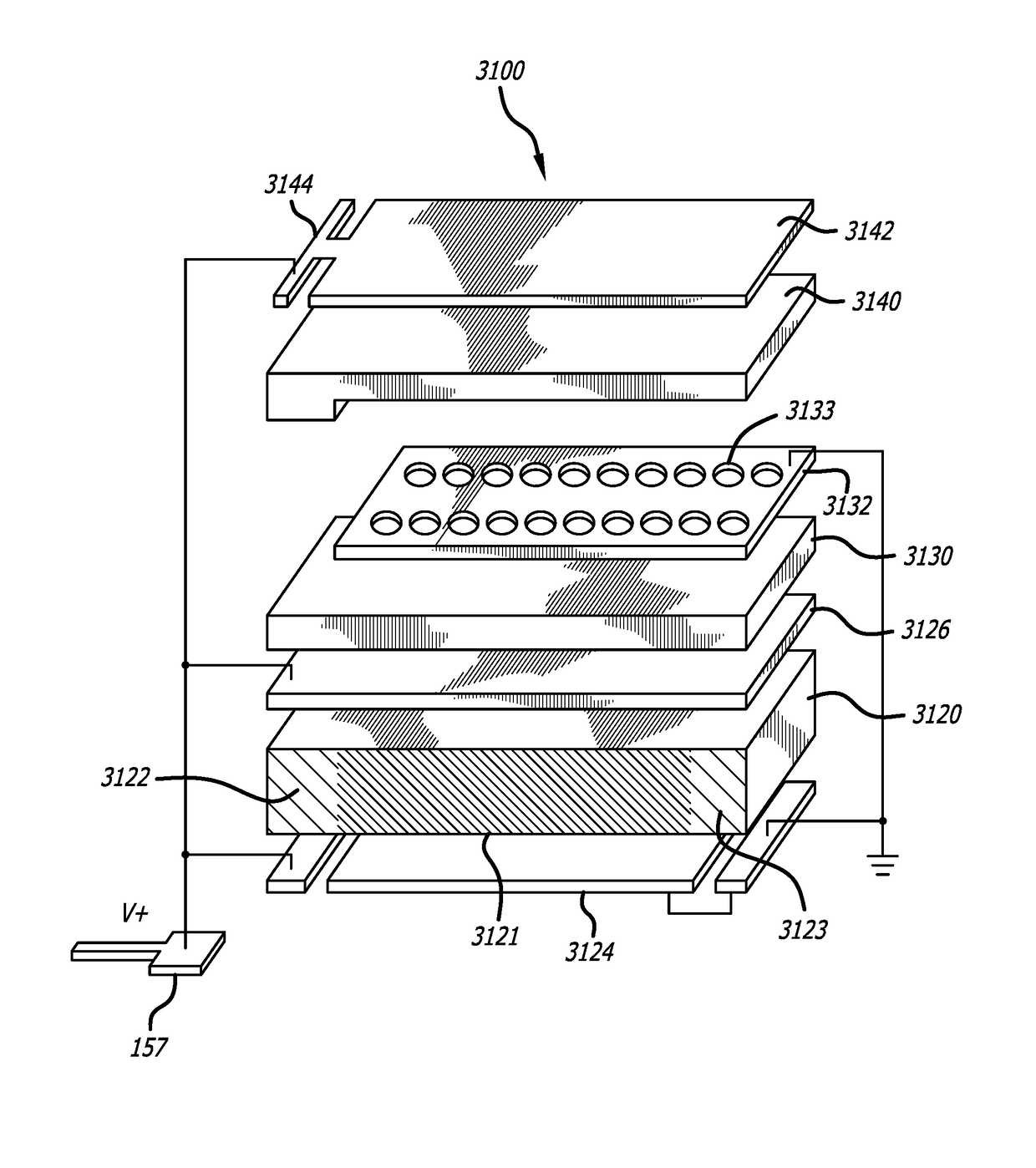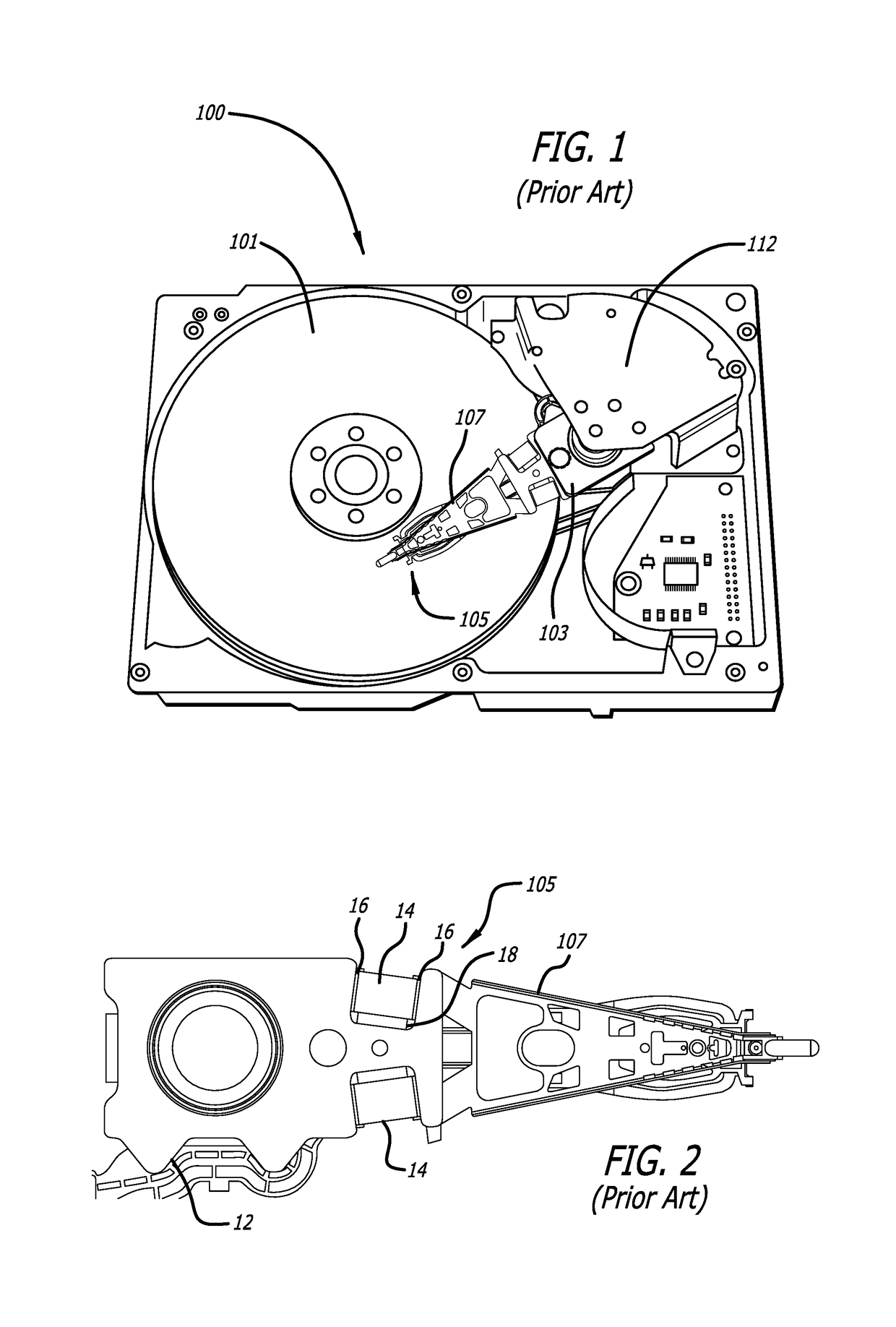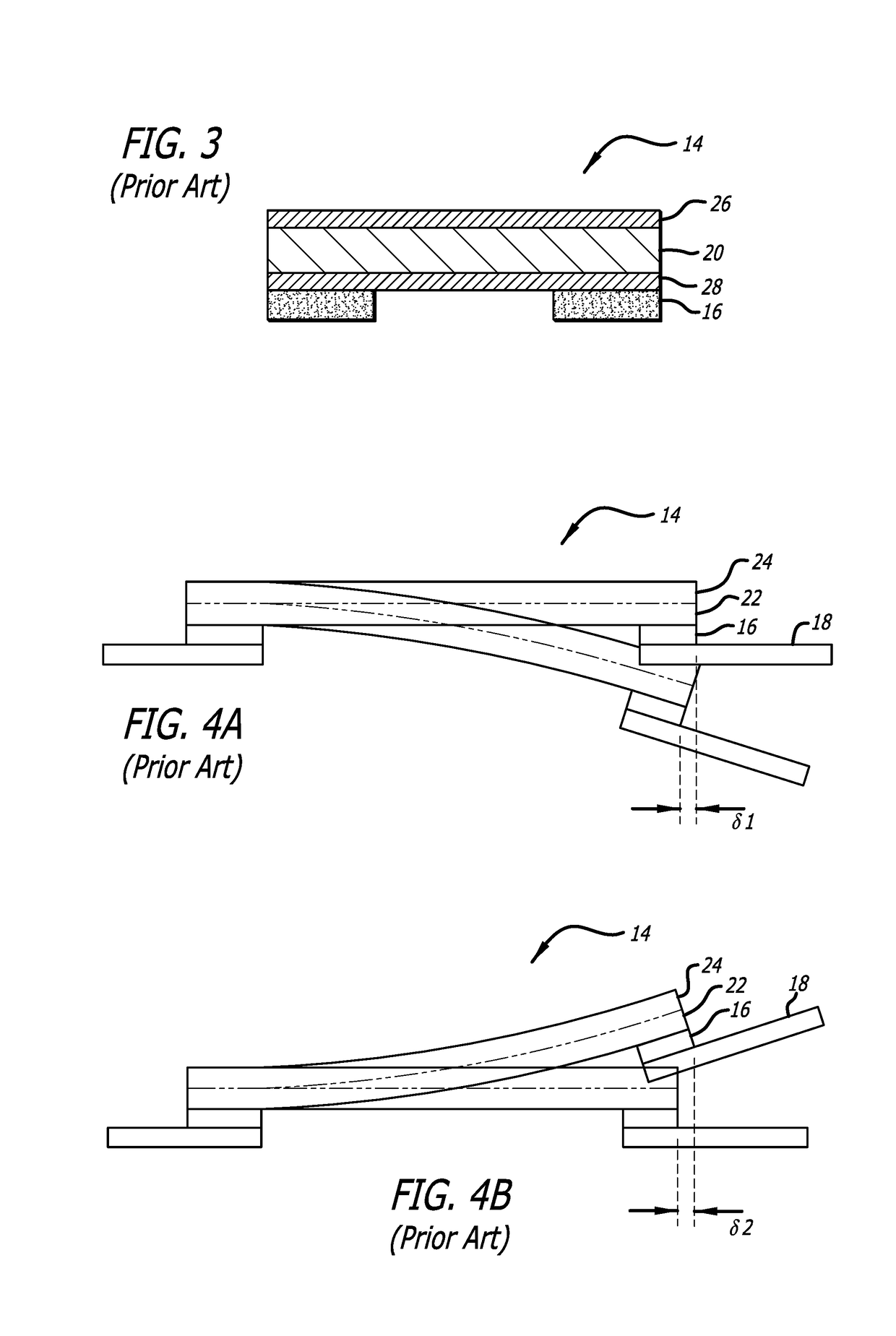[0012]The inventors of the application have identified a source of lost PZT stroke length in a suspension having a PZT microactuator mounted thereto according to the prior art, and have developed a PZT microactuator structure and method of producing it that eliminates the source of that lost stroke length.
[0018]The present invention is of a PZT element that has one or more stiff restraining layers or restraining elements bonded onto at least one side or face opposite the side or face on which the PZT is mounted to the suspension, in order to reduce, eliminate, change the direction of, or otherwise control bending of the PZT when it is actuated. The counterintuitive result is that even though the PZT has an stiff layer added to it that, at least nominally, restrains the expansion and contraction of the PZT, the effective linear stroke distance achieved actually increases. A PZT having a restraining layer according to the invention can be used as a microactuator in a hard disk drive suspension, although it could be used in other applications as well.
[0019]In a preferred embodiment the effect of the restraining layer is to actually change the direction of bending. Thus, for a PZT that is bonded on its bottom surface to the suspension, the presence of the restraining layer has the effect that when the piezoelectric element is actuated by a voltage that causes the piezoelectric element to expand, the piezoelectric element bends in a direction that causes the top face to become net concave in shape; and when the piezoelectric element is actuated by a voltage that causes the piezoelectric element to contract, the piezoelectric element bends in a direction that causes the top face to become net convex in shape. The effect is therefore to actually increase the effective linear expansion in expansion mode, and to increase the effective linear contraction in contraction mode. The presence of the restraining layer therefore actually increases the effective stroke length.
[0021]The constraining layer may be larger (of greater surface area) than the PZT element, the same size as the PZT element, or may be smaller (of lesser surface area) than the PZT element. In a preferred embodiment, the constraining layer is smaller than the PZT element, giving the microactuator a step-like structure with the shelf of the step uncovered by the restraining layer, and with the shelf being where the electrical connection is made to the PZT element. One benefit of such a construction including a shelf where the electrical connection is made is that the completed assembly including the electrical connection has a lower profile than if the restraining layer covers the entire PZT. A lower profile is advantageous because it means that more hard drive platters and their suspensions can be stacked together within a given platter stack height, thus increasing the data storage capacity within a given volume of disk drive assembly.
[0022]Simulations have shown that microactuators constructed according to the invention exhibit enhanced stroke sensitivity, and also exhibited reduced sway mode gain and torsion mode gain. These are advantageous in increasing head positioning control loop bandwidth, which translates into both lower data seek times and lower susceptibility to vibrations.
[0023]An additional advantage of adding a constraining layer(s) or element(s) to the PZT according to the invention is that in hard disk drives today, the suspension and its components including the PZT are usually very thin. Microactuators used in today's DSA suspension designs in which the PZTs are mounted at the mount plate, are on the order of 150 μm thick. In gimbal-mounted DSA suspension designs the PZTs are even thinner, often being less than 100 μm thick. The PZT material is therefore very thin and brittle, and can crack easily during both manufacturing / assembly, including both the process of manufacturing the PZT microactuator motor itself as well as the automated pick-and-place operation in the suspension assembly process. It is expected that PZTs in future generation hard drives will be 75 μm thick or thinner, which will exacerbate the problem. It is anticipated that PZTs this thin will not only be susceptible to damage during manufacturing / assembly, but could also be vulnerable to cracking or breaking when the disk drive experiences shock, i.e., g-forces. The additional stiff, resilient constraining layer according to the present invention provides additional strength and resiliency to the PZT thus helping to prevent the PZT from cracking or otherwise mechanically failing during manufacturing / assembly and during shock events.
 Login to View More
Login to View More 


